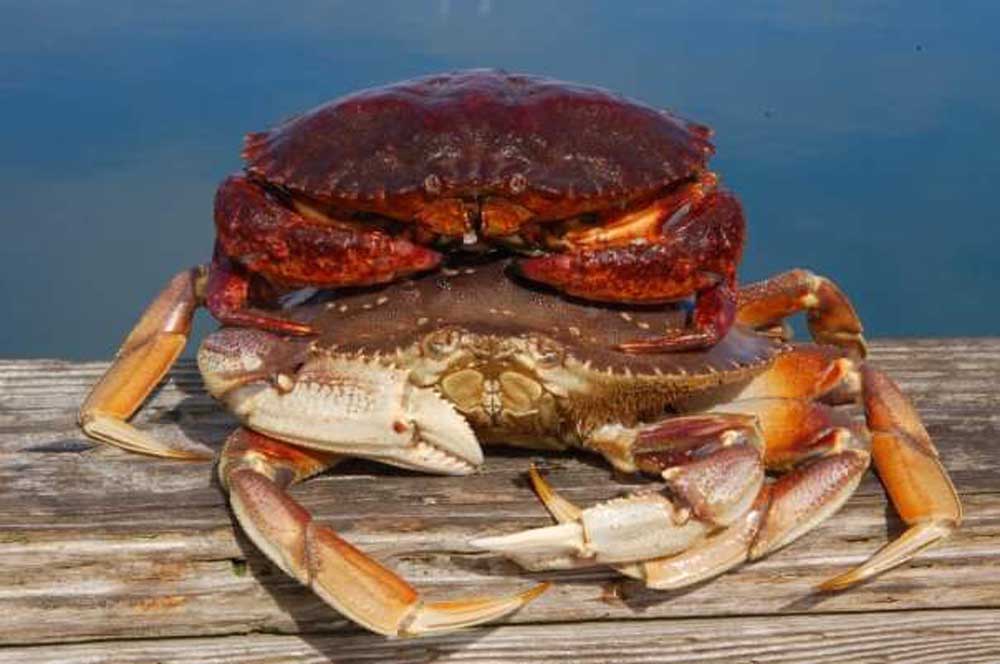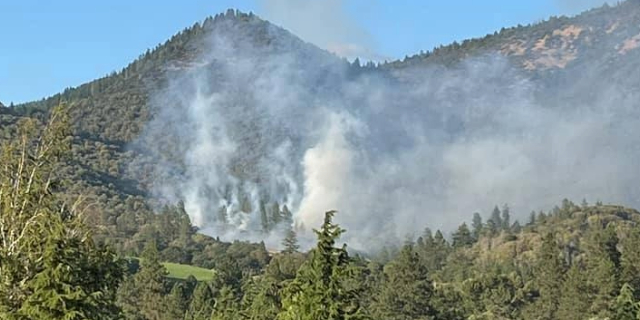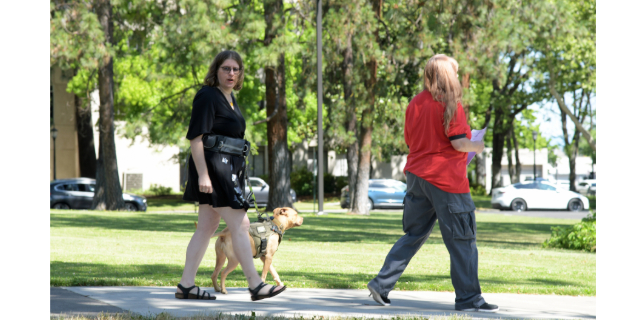State closes recreational crabbing along portion of Southern Oregon Coast
Published 11:00 am Wednesday, May 3, 2023

- A red rock crab piggybacks on a Dungeness crab on a boat dock in Charleston.
State agencies have closed portions of the Southern Oregon Coast to recreational crab harvesting due to the presence of domoic acid, a biotoxin that can sicken people.
The closure, which went into effect Monday, affects about 80 miles of coastline, from Cape Blanco near Port Orford to Tahkenitch Creek eight miles north of Winchester Bay.
It’s expected to last at least two weeks, depending on the results of future testing, according to the Oregon Department of Agriculture and the Oregon Department of Fish and Wildlife.
Crab meat is a celebrated food, with the
best crabbing along the Oregon Coast usually taking place during the fall and winter.
Dianne Williams of Bandon Bait, a restaurant and tackle shop in Bandon, said the impact of the closure isn’t as great as one that happened last winter.
“Right now, it’s not that big of a deal,” she said. “The crabbing is slow right now, so it’s no big impact.”
Williams estimated there have been a half-dozen crabbing closures in the last couple of years.
According to Judy Dowell, a food safety inspector with the Oregon Department of Agriculture, testing that led to the latest closure was conducted on crabs taken between Bandon and North Bend.
“It was our first toxic sample in months,” she said.
Domoic acid is a toxin produced by algae in the ocean. Once the presence of the acid is found in crabs, two subsequent tests at least a week apart are necessary to lift a closure.
In a related matter, the harvesting of razor clams has been closed on the entire Oregon Coast due to the presence of domoic acid. Some parts of the coast have been closed to razor clamming since September. Crabs eat clams, thus ingesting the acid.
“Crabs tend to get it from razor clams,” Dowell said.
Domoic acid doesn’t affect crabs or clams, but can affect mammals and seabirds that eat them.
Symptoms of domoic acid poisoning include nausea, diarrhea, headache, confusion, short-term memory loss and death. Freezing, cooking or other treatment has no effect on toxin levels in crab meat.
Under the current recreational closure, commercial crab fishermen are allowed to harvest crabs but should eviscerate them. Domoic acid is found in the internal organs of the crabs. Because of low crab prices and a scarcity of crabs, Williams said most crab fisherman have already quit crabbing after the winter harvest waned.
“I bet 95% of those guys have pulled their pots months ago,” she said.
Dropping crab pots, or wire traps, for Dungeness or red rock crab is often done by boat, but crabbing from a dock is often done, too. Many marinas and stores on the coast rent crab pots and small boats for crabbing in the bays. A $10 state license, available from outdoor recreation stores or online, is required for recreational crabbing.
Crabbing out of Depoe Bay, Newport and Waldport on the Central Oregon Coast has been poor to fair, according to the latest recreation report from ODFW. People planning to go crabbing or clamming should call the state’s shellfish safety hotline at 800-448-2474 for the most current information about closures.






